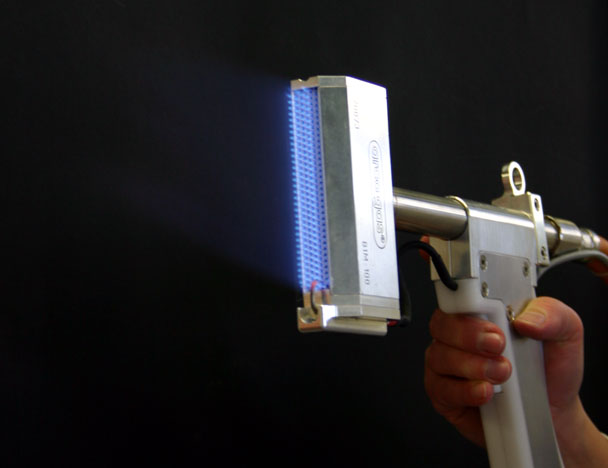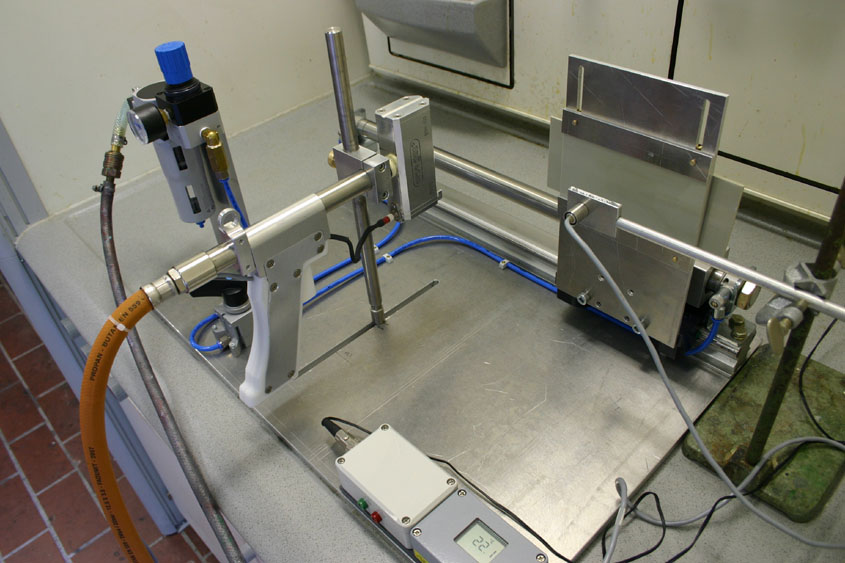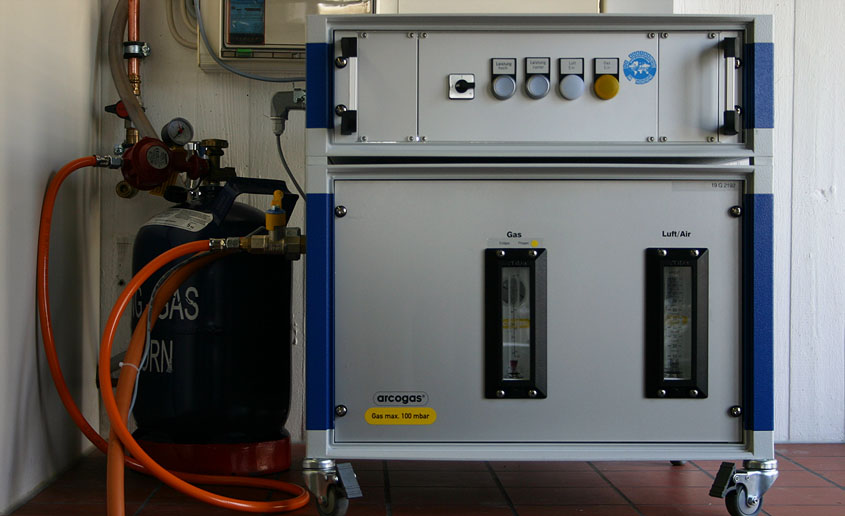Flame treatment
A flame treatment equipment of the company Arcotec is in use at the CMP working group of the Department of Chemistry, University of Paderborn. Currenty we treat plastic samples for subsequent coating with it.
Non-polar materials, such as e.g. Polypropylene, are difficult to paint. They have a non-polar molecular structure. This results in a low surface energy. This is a bad qualification for the wetting (especially when using water-based paints) and the adhesion. Without reactive molecule groups only the relatively weak van der Waals forces can provide for the bond strength as physiochemical bonds. To provide such plastics with a durable coating, different pretreatment methods are used industrially. The flame treatment is the most commonly encountered treatment method in the automotive sector. It works continuously, is relatively easy to use and inexpensive.
During the combustion of the reactant gas (e.g. propane or butane mixed with air) generated reaction products (such as CO2 und H2O) exist partly as radicals. These procdutcs and the unreacted oxygen can crack polymer chains, abstract hydrogen or attach themselves to the polymer chains during the flaming process. This produces polar groups (hydroxyl, hydroperoxide, aldehyde, keto and carboxyl groups) in the plastic surface. This will increase the polar fraction of the surface energy significantly, thereby advantaging wetting and adhesion. Physio-chemical bonds between the following coating and the substrate become possible. Additionally to this, thin layers of contamination can get removed and the surface can get microscopic roughened. Which increases the contact area and the mechanical anchoring opportunities.
The adhesion-promoting property of the flame treatment is not only used a paint pre-treatment. It can also be found as pre-treatment before bonding, printing, flocking, etc. The technology is also used to films. In metal and ceramics industry the flame treatment is used for cleaning.






